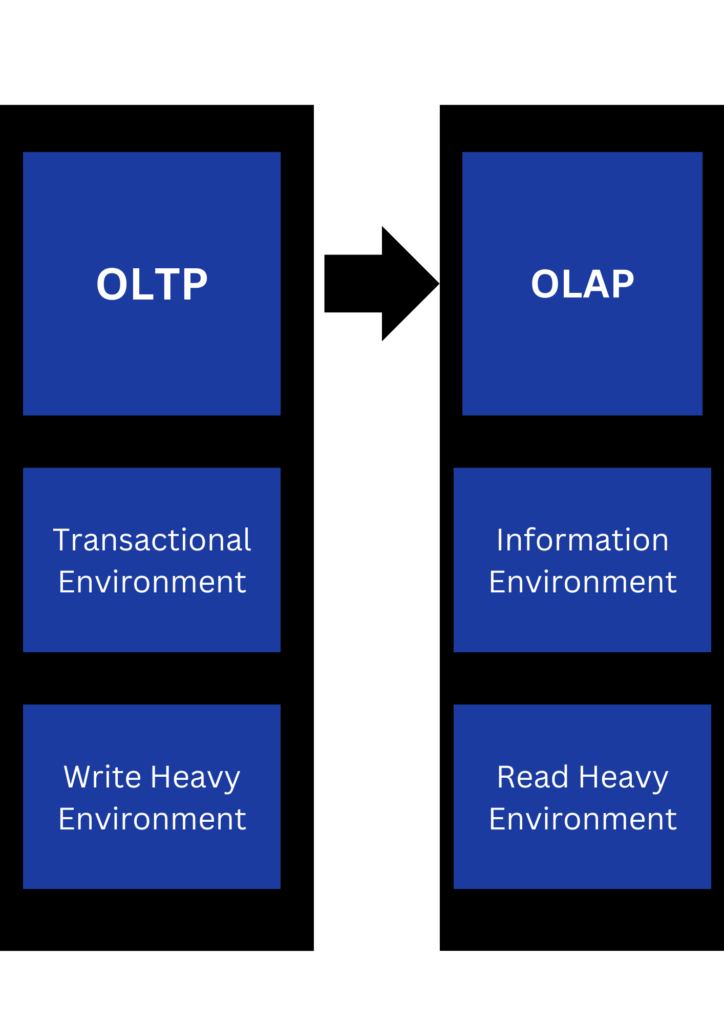OLAP is for analytics processing and OLTP is for Transaction processing. OLAP & OLTP are integrated at enterprise level in order to process transactions and analyze analytics.
OLAP (Online analytics processing systems)
online analytics processing, OLAP is for managing analytics workload, the output is analytics processed via algos, it is read heavy in nature, OLAP allows MDA (multi dimensional analytics ) queries, OLAP ops includes business process management, business reporting, financial reporting, banking analytics and much more. OLAP support multi dimensional data analysis via multi-dimensional perspectives.
Data from multiple sources will be analyzed and processed via OLAP system, OLAP systems are configured to handle large data analytics workload, the data analysis will drive efficiency, scalability and top line growth.
OLAP core operations are :
Roll Up | Drill Down | Slice | Pivot | Dice
In OLAP the data sources will pass the data to the data warehouse where the data will be sent to the OLAP CUBE and once the analytics processing is done via queries and functions then the end user can access the analytics via dashboards, the end user can be business team, marketing team, ops team, data science team, tech team and more…
(OLAP ARE MULTI DIMENSIONAL DATA MODEL)OLAP systems are of three types:
Multidimensional OLAP (MOLAP) | Relational OLAP (ROLAP) | Hybrid OLAP (HOLAP)
OLTP (Online Transaction Processing Systems)
OLTP full form is online transaction processing, OLTP handels transactional workloads, the output is transaction completion, it is write heavy. OLAP is integrated with OLTP system to generated HQ analytics.
The real time processing is carried out in OLTP systems, OLTP is leveraged for internet based transactional systems, The queries in OLTP are Similar then the OLAP but the data volume is very high in OLTP setups.
OLTP systems performance are dependent of the following crucial elements :
1) rollback segment
2) cluster
3) discreet transactions
4) block-size
5) buffer cache
6) dynamic allocation
7) transaction processing
8) partition and isolation
9) database tuning
All the system component work in tandem to ensure high quality OLTP systems. OLTP majorly implements concurrency , atomicity, which provides consistent transactions, durable transaction and speedy transactions.
OLTP system ---> DB ----> DWH ----> DASHBOARDSOLTP is transaction processing on real time basis and OLAP is the analytics processing, both the systems are connected in a distributed scalable system.
Diagram

The article above is rendered by integrating outputs of 1 HUMAN AGENT & 3 AI AGENTS, an amalgamation of HGI and AI to serve technology education globally.